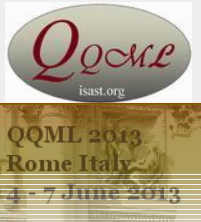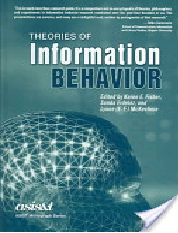
Arquivo para June, 2013
App Brazilian wins contest
The Colab with three finalists competed and won the race against application of the United States and Israel.
The main difference of Colab was the use of gamification, which makes it look like a game to the user, each share of the User he gets points added to the coefficient “colab”.
The application, available for Android and iPhone, also has an online version.
The AppMyCity earned a prize of $ 5000 for Quick, a Brazilian company that created the application.
Missing 10 000 4G antennas in Brasil
On Wednesday, the executive director of the National  Union of Telephone Companies and Service Mobile and Personal (Sinditelebrasil), Eduardo Levy said the missing 10,000 more antennas across the country for the expansion of the service offering fourth generation , especially in the 12 host cities for the World Cup, and the country has about 60 000 antennas installed.
Union of Telephone Companies and Service Mobile and Personal (Sinditelebrasil), Eduardo Levy said the missing 10,000 more antennas across the country for the expansion of the service offering fourth generation , especially in the 12 host cities for the World Cup, and the country has about 60 000 antennas installed.
The companies claim problem with the legislation of some municipalities that hinder the installation of antennas, for reasons ranging from alleged public health risks to visual pollution.
A project that tries to unify the rules to simplify the installation of new antennas being processed currently before Congress.
A test done in the Rio newspaper O Globo, the 20 districts visited, Hi have 4G signal 11; Vivo in ten, and the course in seven. The test did not assess the TIM, which for now is just focusing on plans for modem.
Experience information and colaboration in everyday life
The talk “Collaboration – the most wicked enabler to Research fabulously successful” back interesting findings of Dr. Karen E. Fisher, who is an associate professor at the Information School of the University of Washinton, USA, presented at the 5th. QQML in Rome, Italy.
Their results refer to how people experience information as part of their everyday life, with special emphasis on interpersonal and behavioral aspect, and how information environments or social are “reasons” information within a stream and also when the impact of information technology and communication.
The work of prof. Fischer in the years 2009-2011 went to check the value of public libraries in communities across the United States.
This study used a mixed method (developed with Crandall, Becker, et al.), Which collected data from over 50,000 people through the Institute of Museum and Library Services and the Bill & Melinda Gates Foundation, has as main conclusion that 63% people use people veez technology library for information.
In view of the teacher, this has strong implications for how we design information systems, support information literacy, and determine this impact.
Karen E. Fisher is co-author of Theories of Information Behavior (2005, with S. & L. McKechnie Erdelez), Theory in Motion: Using theories of information behavior to design applications, policy and services (forthcoming, with S. Erdelez) and Digital inclusion: Measuring the Impact of Information and Community Technology (2009, with M. Crandall).
Looking out and looking in – the universe of information
Today the aberture talk of 5th QQML (Roma, Italy) is “Looking out and looking in – the universe of information”, of Lynne Marie Rudasill.
Lynne Rudasill is Associate Professor of Library Administration  and the Center for Global Studies Librarian in Illinois University.
and the Center for Global Studies Librarian in Illinois University.
In his sites said: “Globalization is a consequence of the increasingly rapid world-wide transmission of information. Global Studies Informatics, Media, and Communications (GTS) research explore new information technologies; dissemination of public and private information using new forms of media and social communication networks; governmental policies; and social and political and security impacts”.
GTS-LIS is the top-ranked library school in the nation, and the University Library is the largest public university research library in the United States. With her colleague, Barbara Ford, Director of the Mortenson Center for International Librarianship, Lynne currently teaches an undergraduate global studies course “The Power of Information in Development,” which provides a multidisciplinary and information-intensive approach to the study of the Millennium Development Goals of the United Nations.
New technology in photografics
The inventor used a sensor based on graphene, Qijie Wang is an assistant professor in the department of Electrical and Electronic Engineering of NTU (Nanyang Technological University), believed to be the first time a type sensor is developed with pure graphene, the news is the Phys.org.
“While designing this sensor, we have kept current manufacturing practices in mind. This means the industry can in principle continue producing camera sensors using the CMOS (complementary metal-oxide-semiconductor) process, which is the prevailing technology used by the majority of factories in the electronics industry. Therefore manufacturers can easily replace the current base material of photo sensors with our new nano-structured graphene material.”
The new sensor promises to leave photos taken in dark environments much sharper, because the material is a thousand times more sensitive to light than those used in current cameras while consuming less energy.
Read more at:


